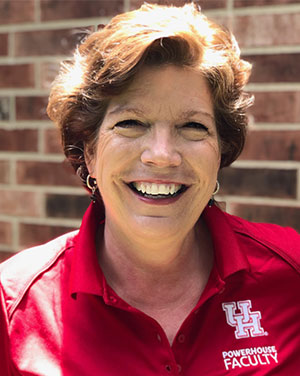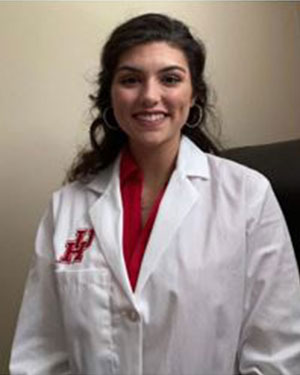NSL - Natural Selection Live

This module explores animal adaptations and how animals with the right adaptations will survive in the environment. Students will learn how animals adapt to survive in the environment they live in, how long adaptions take, and what happens if the environment changes. Students are challenged to explore an environment and create an animal with adaptations that allow it to survive in that environment.
After this module you will be able to:
- Define the word adaptation.
- Describe how adaptations help an organism survive in its environment.
- Design an animal with adaptations that allow this animal to survive in a specific biome.
CONTENT TEKS
- 7.10(A) Observe and describe how different environments, including microhabitats in schoolyards and biomes, support different varieties of organisms.
- B.7(E) Analyze and evaluate the relationship of natural selection to adaptation and to the development of diversity in and among species.
PROCESS TEKS
- 7.3(A) Analyze, evaluate, and critique scientific explanations by using empirical evidence, logical reasoning, and experimental and observational testing so as to encourage critical thinking by the student.
- 7.3(B) Use models to represent aspects of the natural world such as human body systems and plant and animal cells.
NEXT GENERATION SCIENCE STANDARDS
- HS-LS4-4 Construct an explanation based on evidence for how natural selection leads to adaptation of populations.
Materials
Your Life Science Exploration Activity for Tuesday’s lesson can be built using common household materials including, but not limited to, the list presented below which provides ideas for materials that can be used.
- Playdough
- Clay
- Scissors
- Cardboard
- Foam material
- Paper
- Poster paper
- Writing utensils: pencil, pen, markers, colored pencils, etc.
- Decoration items
- Virtual apps: Minecraft, YouTube, sketching apps, etc.
Safety
- Use sharp objects carefully.
- Wash your hands after working with playdough or clay.
- If you are using a technology device, make sure your device screen is about 25 inches away from your face.
- To prevent eye strain from screen time, every 20 minutes, take a rest and look at an object at least 20 feet away for at least 20 seconds.
- Clean up your workspace by putting all materials away and leaving the area as you found it.
Activity
Watch the activity video below.
Steps
- Pick a biome that Analytic Alex mentioned in the video.
Analytic Alex’s Biomes:
• Desert
• Tundra
• Grassland
• Forest
• Marine
• Freshwater
Learn More About These Biomes - Now that you are familiar with the biome you chose, use common household materials to create a new animal with five adaptations that help this animal to survive in the biome that you picked.
- Make a video (TikTok, YouTube, etc.), story, comic, or picture book to share your new animal and explain the adaptations that help your animal survive in the selected biome.
Dig Deeper
Read This
Recommended: Middle and High School
Did you know the Galapagos Islands are possibly the most studied islands in the world
due to the interesting species found here? In addition, these islands have a unique
environment for an island —a strange mix of both tropical and temperate environments.
Learn more about the scientific findings in the Galapagos Islands; delve into the islands and
their impact with species over time.
Recommended: Middle School
Did you know that there are several reasons why organisms adapt? Learn more about different adaptations found in different animals and how adaptations benefit
organisms in their environment.
Try This
Recommended: Middle School and High School
Did you know we can use a simulation to model the process of natural selection? Try this simulation to see what happens to the brown bunnies and the white bunnies when a predator arrives
to the environment. Additionally, you can explore what happens to these bunnies when
there is limited food. Play with the simulation and change whatever variables you
want.
Watch This
Did you know birds have certain traits which have led many scientists to believe they are modern-day dinosaurs? Watch more to learn about the insightful journey of these creatures.
Did you know the marine iguanas in the Galapagos Islands are capable of swimming in order to find food and their diet consists of seaweed? Watch a video about marine iguanas.
Show What You Know
Meet Our Expert
What does the length of your arms have to do with your height, and how is this related to adaptations? Tony Frankino, Ph.D., Associate Professor and STEM expert from University of Houston’s Department of Biology & Biochemistry, shares insight into this fascinating question.
Meet The Teachers

Ramona Mateer
Program Director, teachHOUSTON STEM Interactive
Master Teacher, teachHOUSTON, Department of Mathematics, University of Houston
Ramona Mateer, a University of Houston alumna, earned an M.Ed. in Science Curriculum
and Technology (University of Texas). She is a former junior high school science teacher
and instructional coach. In her free time, she cycles, reads, and enjoys Nintendo
Switch online gaming.

Carlos Perez
Biology Teacher, Cypress-Fairbanks ISD, Cypress Ridge High School
University of Houston, College of Natural Sciences and Mathematics, teachHOUSTON Alumnus, Biology Major
Mr. Perez is a biology teacher at Cypress Ridge High School. He graduated from the
teachHOUSTON Program at the University of Houston. He always strives to make science fun
and accessible to all students. In his free time, Mr. Perez enjoys learning fun facts
about science, and he likes to spend time in nature.

Sajjad Razzaq
Biology Major, teachHOUSTON Preservice Teacher, University of Houston, College of Natural Sciences and
Mathematics
Mr. Razzaq is a biology major who loves learning about health and science. He aspires
to be a health science educator or a doctor upon graduation. He loves to play video
games and likes to draw in his free time. He believes that learning should be fun
and is excited to be a part of the virtual summer camp with the teachHOUSTON Program again. .

Brian Gonzales
Biology Major, teachHOUSTON Preservice Teacher, University of Houston, College of Natural Sciences and
Mathematics
teachHOUSTON STEM Interactive Video Editor
Mr. Gonzales is an undergraduate student at the University of Houston. He will be
student teaching in the fall and would like to teach either biology or anatomy and
physiology once he receives his teaching certification. In his free time, he enjoys
listening to artists like twenty one pilots or Billie Eilish, building Lego Star Wars
sets, and practicing photography at the park.

Kendall Bailey
Biology Major, teachHOUSTON Preservice Teacher, University of Houston, College of Natural Sciences and
Mathematics
Ms. Bailey is an undergraduate student at the University of Houston pursuing a degree
in biology. Currently, she is halfway through the teachHOUSTON program and is excited to be back at the university in person this fall to
continue her studies. In her free time, Ms. Bailey enjoys working out and catching
up on her sleep!

Caroline Nguyen
Biology Major, teachHOUSTON Preservice Teacher, University of Houston, College of Natural Sciences and
Mathematics
Ms. Nguyen is an undergraduate student at the University of Houston. She will take
Multiple Teaching Strategies in the fall and is excited to see all her teachHOUSTON friends again. Outside of school, she loves to skateboard, do embroidery,
and laugh at corny jokes!

Jane Pham
Biology Major teachHOUSTON Preservice Teacher, University of Houston, College of Natural Sciences and
Mathematics
Ms. Pham is an undergraduate student at the University of Houston. She will begin
her student teaching in the fall semester. In her free time, she likes to read novels/comic
books and watch anime and horror movies at midnight to reduce her stress.
- https://www.galapagos.org/about_galapagos/about-galapagos/history/species-arrival-and-evolution/
- https://ncse.ngo/files/pub/evolution/Evolution--Futuyma--chap11--fb.pdf
- https://www.nationalgeographic.org/article/adaptation-and-survival/12th-grade/
- https://www.youtube.com/watch?v=eaWb0UUNc00&t=61s
- https://www.youtube.com/watch?v=wNqiclBUxdY
- https://www.yourgenome.org/facts/what-is-evolution
- https://www.nationalgeographic.org/encyclopedia/natural-selection/
- https://www.nhm.ac.uk/discover/what-is-natural-selection.html
- https://ucmp.berkeley.edu/exhibits/biomes/index.php